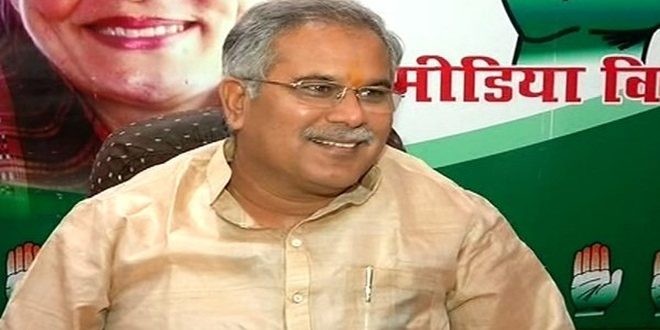
From focusing on 'padyatras' for building a mass connect to reviving the morale of party workers, the credit for reversing the fortunes of Congress in Chhattisgarh goes to Bhupesh Baghel, a streetfighter who took the BJP regime head on in the run-up to the election and was on Sunday named the heartland state’s chief minister.
The former minister in Digvijaya's Singh cabinet in Madhya Pradesh had a steep task ahead of him as he had to rebuild from scratch after a fatal Maoist attack in Darba of Bastar district wiped out the entire state leadership in 2013.
"The entire state Congress leadership was destroyed. So immediately after, during the elections, the party didn't do well. But since 2013, the focus has been on rebuilding," said an AICC leader. He successfully marginalised Ajit Jogi, as well as his family, after the former CM quit the party last year.
Key to the plans of rebuilding the party in the state was the focus on OBC voters, who were primarily farmers.
The BJP had won three elections riding on backward votes — the kurmis and the sahus together constitute 36% of the total population of the state. Congress made Tamardhwaj Sahu its national president of the OBC cell. He, along with state Congress president Baghel, was projected as CM face of the party.
"The idea was to not conduct rallies or travel without interacting with people. Instead, Baghel walked over 10,000 km during the stretch of campaigning. He interacted with voters, the poor farmers and this helped in building a connection with voters that couldn't be replicated otherwise," said a close aide.
In the first assembly elections of Chhattisgarh in 2003, the Congress was defeated but Baghel had retained his seat. In 2008, he lost the election but returned to the assembly in 2013. He was made Deputy Leader of Opposition in Chhattisgarh State Legislative Assembly from 2003 to 2008.
Baghel, a patron of Chhattisgarh Manva Kumri Chhatriya Samaj since 1993, represents the Kurmi community that has large representation in the state.
But in Ajit Jogi, the Congress had a challenge. The caste fault-line in the state runs through the deep divisions between the satnami Dalits and OBCs and Jogi’s presence in Congress had helped BJP polarise the backward communities in its favour.
BJP won more than 90% of the SC seats due to anti-satnami polarisation of other castes in these constituencies. "The next step was to figure out how to marginalise Ajit Jogi," said a source in the Congress. But Jogi floating his own party made this task easier. "We lost the votes that Jogi would have got us, but instead we received the OBC votes that were going towards the BJP. So our vote share remained stable, while the BJP's dipped."
Jogi, the first CM of the state formed by the division of Madhya Pradesh in 2000, remained the dominant face of the party till last year. He enjoys a strong following among the Dalit community residing in rice bowl of Chhattisgarh sandwiched between the tribal belts of Sarguja in the north and Bastar in the south.
The data released by the Election Commission of India shows that the Jogi factor indeed took away almost 9% of the Congress’s vote in the three divisions of Durg, Raipur and Bilaspur, bringing down Congress’s vote percentage from 40.3% to 31%. But the Congress made up for this, by walking away with almost 8-10% of the BJP’s Sahu-Kurmi and OBC votes.
The party also replicated the BJP's strategy of booth management — something which had been key in their success. In doing so, the party leaders said, they were able to find some chinks in the BJP's armour.
"We built our strength at the booth level. This isn't something we had done earlier, but as we did so we realised that a lot of people were listed as 'fake voters'. When we spoke to them, we realised that they weren't, in fact, BJP voters. We tried to understand those issues and accordingly worked."
"The major issue that the Congress faced in the party was that because certain leaders, including Jogi had gone soft on Raman Singh, the party was projected as the 'B-team of BJP'. Under the leadership of Baghel, the party was able to change this. We fought a number of court cases on different issues and that was also important in changing the perception of people," added the aide.
Moreover, the Congress was able to capitalise on the ongoing agrarian distress in the state. "Whether it was the promise of loan waiver or increased minimum support prices, we were able to convince the farmers in the state that the Congress party would take care of them," added the aide.


.jpeg)

